André Klein's Blog, page 8
July 30, 2018
6 Famous German Beer Styles & Brands You Have To Taste For Yourself

German beer is inarguably one of the most famous staples of German culture, way up there with Sauerkraut, cakes, automotive engineering and wearing socks and sandals. (Sorry for that.)
But have you ever asked yourself how many German beers there are? According to some sources, there are more than 7800 (!) different beers from more than 1400 breweries all over Germany.
In other words, we really love our Gerstensaft (literally: “barley juice”). But what is the difference between all these different German beer styles? What’s their history? And which beer brands are most popular?
Pils

The most popular beer in Germany by a long way is the Pils. It’s a bright-golden beer with a hoppy-bitter taste that got its name from the Bohemian (today Czech) city of Pilsen.
In the 19th century the quality of local beer was so bad that a committee was formed to establish a new brewery which was manned by Josef Groll, a brewmaster from Bavaria, who brought with him a special recipe of “untergärig” (bottom-fermented) beer his father had invented.
On the 11th of November 1842 the first Pilsen beer was publicly served and the times of bad Bohemian beer were over once and for all.
Nowadays, Pils is usally served in a special glass known as “Pilsglas” or “gestielte Tulpe” which literally means: “pediculated tulip”
Famous German Pils brands are: Krombacher Pils, Bitburger Pils, Veltins Pilsener, Warsteiner Pils, Hasseröder Pilsener, Radeberger Pilsner, Beck’s Pilsener, Oettinger Pils, König Pilsener and Jever.
Weizenbier

The Weizenbier (also known as Weißbier) is the most Bavarian of all German beers and its triumphal march from the south to the north and abroad is a testament to its fruity taste.
Contrary to the “untergärig” Pils, where the yeast sinks to the bottom, Weizenbier is a “obergärig” (top-fermented) beer where the yeast swims on top of the brew.
There are two sub-types of Weizenbier: Kristallweizen (“crystal wheat”) and Hefeweizen (“yeast wheat”). In the former, yeast and sediments are filtered out, increasing the clarity of the brew, hence the name, where the latter is exactly the opposite: a full-bodied murky concoction rich with yeast and sediments.
Weizenbier is traditionally served in special tall slender glasses known as Weizenbiergläser and pouring it correctly is an artform:
Famous Weizenbier brands are: Erdinger Weißbier, Paulaner Hefe-Weißbier, Rothaus Hefe-Weizen, Schöfferhofer Weizen, Licher Weizen, Franziskaner Hefe-Weißbier and Maisel’s Weisse
Bockbier

photo by Z thomas via Wikimedia Commons (CC BY-SA 3.0)
Looking for something stronger? Bockbier belong to the category of Starkbiere (“strong beers”) with more than 6.5% alcohohl. There are brighter and darker varieties, but nowadays most Bock beers are bottom-fermented, dark, sweet noticeably less hopped.
This beer style was first conceived in the city of Einbeck in Lower-Saxony. When the sons of Heinrich des Löwen (“Henry the Lion”) bestowed the municipal right onto the city, its citizen also gained a license to brew beer. Bock was considered a luxury in Medieval times and was exported as far away as Italy. In order to ensure its storability, it was brewed with a strong Stammwürze (gravity, literally: “stem spice”) which resulted in the high amount of alcohohl.
Other varieties are Doppelbock (even stronger), Maibock (brighter and less sweet), Festbock (Austrian variety) and Eisbock (beer is freezed over and frozen water is removed).
Bock beer is usually consumed in bulbous glasses.
Popular German Bock beer brands are: Einbecker Ur-Bock (Hell/Dunkel), Schneider Weisse Aventinus Eisbock, Weihenstephaner Korbinian, Hofbräu Maibock and Flensburger Frühlingsbock.
Altbier

photo by Dave via Flickr (CC BY-NC-ND 2.0)
Altbier, literally “old beer” is a dark top-fermented beer most popular in the areas around Düsseldorf. It’s often just refered to as “Alt”.
Altbier is brewed at higher temperatures than bottom-fermented beer which was beneficial in times when no technical cooling existed yet. After Carl von Linde invented the Kältemaschine (refrigeration machine) in 1873, bottom-fermented beers like Pils became more popular because ice-cellars weren’t necessary anymore. But still most breweries continued to offer both the “new” and the “old” beer.
Altbier is usually served in the Altbier-Becher, a cylindrical small glass.
Famous Altbier brands are: Düssel Alt, Felskrone Alt, Gatz Altbier, Oettinger Alt, Schlüssel Altbier, Uerige Alt, Füchschen Alt and Bolten Alt.
Kölsch

Another local variety, Kölsch is a clear, bright, top-fermented beer which, at least in Germany, can only be legally produced in the region of Köln (Cologne).
At first glance, a Pils and a Kölsch look deceivingly similar: the color, fizz and head (foam) are almost indistinguishable. But when it comes to the brewing process and taste, the differences become obvious.
Kölsch is brewed with top-fermenting yeast known as Kölschhefe (“Cologne yeast”) which makes for a fruitier taste than Pils. Additionally, unlike Pils, Kölsch also contains a certain portion of wheat malt.
Kölsch is served in the famous Kölner Stange (literally: “Cologne staff”), a cylindrical 0.2 liter glass similar to the Altbier-Becher, but taller and slimmer.
Popular Kölsch brands are: Früh Kölsch, Dom Kölsch, Gaffel Kölsch, Päffgen Kölsch, Sion Kölsch and Küppers Kölsch.
Zwickelbier/Kellerbier
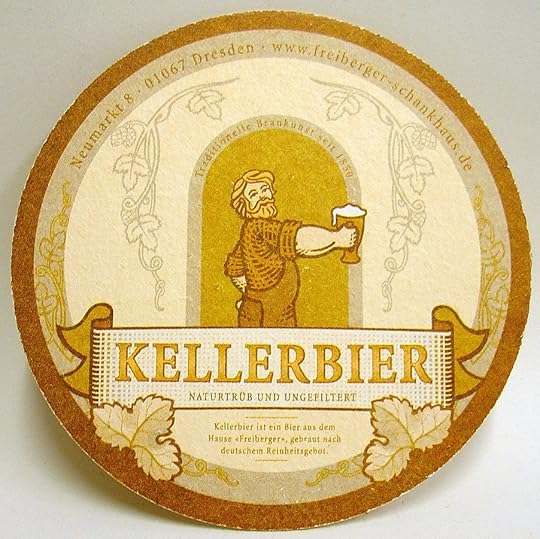
photo by Jens Jäpel via Wikimedia Commons (CC BY 3.0)
This style of beer, also known as Kellerbier (literally: “cellar beer”) is an unfiltered, naturally cloudy beer that is often served (or bottled) immediately after secondary fermentation.
Zwickel- or Kellerbier contains less carbon dioxide than most other beers and is considered the nutritionally superior choice to filtered beers, because all the sediments and trub are not thrown out.
The name “Zwickelbier” dates back to the process of taking a sample directly from the fermenting vat known as “zwickeln”. The name “Kellerbier” refers to the fact that it comes “straight from the cellar”, i.e. no filtration process.
Although Kellerbier and Zwickelbier are often used synonymously, the Kellerbier is actually slightly more hopped. Both are usually served in the “Seidel”, the traditional German 1 liter beer mug.
Popular German Kellerbier/Zwickelbier brands are: Hofbräu Münchner Sommer, Oettinger Kellerbier, Lösch-Zwerg Kellerbier and Köstritzer Kellerbier.
What are your favorite German beer brands or styles? Prost!
–
sources: biermap24.de, brauer-bund.de, wikipedia
The post 6 Famous German Beer Styles & Brands You Have To Taste For Yourself appeared first on LearnOutLive.
July 20, 2018
These 5 German Cakes Will Make Your Mouth Water
One of the most rewarding aspects of learning a new language is getting to know a whole new culture and cuisine! We have a saying in German: “Liebe geht durch den Magen.” – “The way to a (wo)man’s heart is through her/his stomach.” And the same probably goes for languages, too!
Today we’ll take a look at a couple of famous German cakes, their names and origins, so that next time, you’re in a German café, you can eat yourself through all of them and chalk it up to “German practice”. So, kick-start your espresso machines and get your pastry forks!

photo by Mufi69 via Wikimedia (CC BY-SA 2.0 de)
Der Bienenstich (“bee sting”)
Bienenstich, literally “bee sting” is a German yeast dough cake filled with vanilla custard (or cream) and caramelized almonds baked on top and filled with vanilla custard. But how did it get this strange name? Is it because bees love this cake so much they’ll sting you to get a bite?
The origin is unclear, but according to a legend, in the 15th century a group of German baker apprentices defended themselves against raiders from another village by throwing beehives at them! To celebrate their victory, the Bienenstich cake was baked.

photo by Matt Lancashire via Flickr (CC BY-NC 2.0)
Die Donauwelle (“Danube Wave”)
Donauwelle, literally ‘Danube wave’, is a German/Austrian sheet cake combining layers of regular and chocolate pound cake with sour cherries. It’s topped with chocolate glaze and buttercream.
The name “Danube wave” comes fom the way the two layers of cake are forming a wavy border. Why Danube, though? It could be because of the popularity of this cake in the areas along this river, e.g. Vienna, Ulm, Ingolstadt, Regensburg, etc.
Another name for this cake is “Schneewittchentorte” (literally: snow white cake) because of the red, white and black color scheme.

photo by Pixabay
Der Apfelstrudel (“apple swirl”)
Apfelstrudel, literally “apple swirl” is world-renowned, not least because of Rodgers & Hammerstein’s famous line in “My Favorite Things”. But what is it exactly?
Strudel is a form of layered pastry, usually with a sweet filling, such as apples or custard. It’s related to Near East pastries such as baklava, became popular in the Habsburg Empire around the 18th century and is still considered one of the trademark pastries of Vienna.
And yes, the German word “der Strudel” literally means: vortex, maelstrom, eddy, or whirlpool.
“Would you like some coffee with that apple vortex?”
The reason for this strange name is that originally Strudels were spiral-shaped. Through the centuries the shape slowly changed (today Strudels are mostly flat), but the name stuck.
Fun fact: in Hebrew, the @-sign is also called “Strudel”.

photo by Ishikawa Ken via Flickr (CC BY-SA 2.0)
Der Baumkuchen (“tree cake”)
A feast for beavers? Fortunately, Baumkuchen (“tree cake”) does not contain any traces of timber. It’s simply a German variety of spit cake, which is popular in many European countries. In Greece it’s called Obelisa, in Romania Agnethler, in Hungary Kürtőskalács.
The cake is made by brushing between 15-20 layers of batter onto a spit and roasting it. When sliced, the many thin layers of the cake resemble growth rings of trees, hence the name. Due to the time- and labor-intensive process of baking this cake, it’s considered a delicacy and often very expensive.
Curiously, in Japan, Baumkuchen (バウムクーヘン, Baumukūhen) is one of the most popular pastries ever and available in most supermarkets, despite its relatively high price.

photo by Claus Ableiter via Wikimedia (CC BY-SA 3.0)
Der Frankfurter Kranz (Frankfurt Crown Cake)
The Frankfurter Kranz (literally “Frankfurt Crown Cake”) is a ring-shaped buttercream cake. It consists of multiple rings of sponge cake with buttercream in between. The exterior is coated with even more buttercream, caramel-covered brittle nuts (known as “Krokant”), cherries, toasted almond flakes or hazelnuts.
Why crown cake? Frankfurt used to be the city where Germans emperors were crowned. And the cake even looks a bit like a crown, with its ring shape, the golden Krokant and the ruby-red cherries on top.

photo by Pixabay
Die Schwarzwälder Kirschtorte (Black Forest Cherry Cake)
The Schwarzwälder Kirschtorte, literally: “Black Forest Cherry Tart”, is a famous German chocolate sponge cake with cherry filling. It consists of multiple layers of sponge cake, whipped cream, chocolate shavings and maraschino (or sour) cherries. Its top is sprinkled with Kirschwasser, literally: “cherry water”, a clear spirit made from sour cherries.

“Bollenhut”
There are a number of theories for the origin of this name:
The coating of black chocolate shavings is reminiscent of a dark forest, such as the Black Forest.
The Kirschwasser spirit, which is sprinkled on top, is mostly produced in the Black Forest area.
Yet another theory states that the colors of the Black Forest cake are reminiscent of the traditional ethnic “Bollenhut” from the area.
What’s your favorite German cake?
–
The post These 5 German Cakes Will Make Your Mouth Water appeared first on LearnOutLive.
July 11, 2018
Global German: Meet Monte Joffee from New York City

Monte and his Austrian grandson Leon
After talking to the German learning group from Sioux Falls, I’m happy to share with you another interview today. Meet Monte!
In the late 60s he took some introductory courses in college, fell in love with the language, but through the course of a busy career and family life his skills gradually declined. Being a true New Yorker he maintained his proficiency by “slightly assaulting anyone” whom he heard speaking German in the subway.
Then, as he says, “in one of those twists of life” his daughter moved to Vienna, got married, and started raising a child. Monte has visited Vienna multiple times since and found ample opportunities to practice his German.
However, he also experienced a common problem of German learners everywhere, because he found that locals speak English so well that they “shift languages as soon as they hear my fumbling.”
You mentioned that you first started taking German lessons in the 60s. What was it that fascinated you about the language? In short, why did you pick German and not Italian or Spanish or something else?
I had an extraordinary French teacher in 9th grade, Mr. Harry Levine. He inspired a love of languages in me. I continued studying French as a minor through college. I planned for a semester of study in Neuchatel Switzerland in the spring of 1968. To prepare for the trip I also signed up for three college German classes which I loved.
These were still the postwar years and coming from a Jewish family, German was a suspicious language (even through my parents dabbled in Yiddish). I enjoyed being the rebel. After my semester in Neuchatel, where I learned that the only people I could understand were other international students who were taught classical accents, I embarked on a summer of travel. I wanted to experience the “Prague Spring.”
My plans were changed when someone stole my money in a youth hostel in Brno. My options were either to return to the US or travel to Berlin and find Auslaender work. So I worked in a AEG Telefunken factory, stayed at a youth hostel in Fehrberliner Platz, and my only friends were a group of Arab Auslaender. So this Jewish boy had a serious peace initiative with Arab youth.
Back in the US I became a school teacher in the South Bronx where I had to pick up some Spanish.
Would you say that learning German has changed your life?
No, I can’t say that learning German has “changed my life.” I have fun when I hear some German being spoken in the streets or the subways of NYC. Tourists are pretty surprised when they meet an American who speaks German. As the joke goes, “If you speak three languages you’re trilingual. If you speak one langue you’re bilingual. If you speak one language you’re American.”
What do you find most difficult in learning German?
It seems I have a fairly natural gift of pronunciation according to M. Levine. I invariable get compliments. However gifts are always accompanied by curses. I have a great difficulty with comprehension. Always have and always will, I expect. I became a Buddhist in 1970. I believe there is some deep meaning in this curse. Because of it I never desired to live a wannabe French (or German) expat life. Instead I’ve built a truly wonderful life here in America. In addition, now that I’m a septuagenarian I find that learning vocabulary is VERY difficult. I never remembered this challenge when I am younger.
Which resources and tools do you use on a regular basis?
Right now my two major tools are your books and Google Translate. The latter is a great practice. I use it when I text out to French-German-Spanish friends and study the translations that are produced.
If there’s one thing you’ve found most effective on your learning journey, what was it? Talking to natives perhaps? Or watching TV in German?
Naw, German TV is too advanced unless it’s subtitled for some reason. Speaking to natives is difficult–they know English so well that they prefer switching languages than hearing my fractured attempts. Speaking German to sales clerks is extremely helpful. They are being paid to be patient and polite and I practice a bit with Google Translate before I speak. Also, learning lyrics to songs is enjoyable and productive. I love the old French chansons (Piaf, Dutronc, etc.) and right now I’m plowing through a bit of Die Dreigroschenoper. Strange, isn’t it?
Is there perhaps anything else you’d like to share with our community of German learners? Any special tips or suggestions?
Time is always of the essence!! We all have very busy schedules. How do people manage to squeeze time for language study?
Thank you for the interview.
–
Are you learning German, too, and would like to be featured on our blog? Write an email to info@learnoutlive.com including a photo, a bit of background about yourself, why you’re learning German, what parts your struggling with, and which tools/resources you find most helpful.
The post Global German: Meet Monte Joffee from New York City appeared first on LearnOutLive.
July 9, 2018
11 Yiddish Words in German And Their Ancient Hebrew Origins
Did you know that some of the funniest, most expressive words in German aren’t actually German but Yiddish? They’ve become such an integral part of our language that even native speakers aren’t always aware of their origins.
Interestingly, while American English also embraced many Yiddish expressions, these aren’t always the same ones that made it into standard German. For example, “Klutz” (clumsy fellow) is well known in American English, and although it derives from the German “der Klotz” (block), it’s not part of standard German vocabulary. Vice versa, German words with Yiddish origins such as “Kies” (money), “Großkotz” (braggart) and “Pleite” (bankruptcy), are virtually unknown in standard English.
For simplicity’s sake, I’m focusing mostly on Yiddish words which are shared both by English and German speakers. Ready? Let’s start with something simple.
meschugge (adj.)

This beautiful Yiddish word, based on the Hebrew for “crazy” – meshugah (מְשׁוּגָּע), is known to most English and German speakers. The pronunciation is slightly different though. Listen here:
German:
English:
Example: “Sarah geht bei 3 Grad Celsius schwimmen. Sie ist total meschugge!”
die Mischpoke (noun, f.)

“There is no such thing as fun for the whole family.” ― Jerry Seinfeld.
“Die Mischpoke” is the standard German of the Yiddish “mischpoche”, which is based on the Hebrew word for “family” – mishpachah (מִשְׁפָּחָה).
Pronunciation:
Example: “Kam Peter allein?” – “Nein! Mit der ganzen Mischpoke.”
das Schlamassel (noun, n.)

“Well, I was never in luck’s way long.” ― Arthur Conan Doyle
Oy vey! This is another famous one. It’s a compound consisting of the German word “schlimm” (bad, terrible) and the Hebrew for “luck” – mazal (מזל), as made famous by the Yiddish “Mazel tov!” The first part could also be from the Hebrew negation particle “shelo” (שֶׁלֹא).
Pronunciation:
Example: “Ich habe einen neuen Karton Milch geöffnet. Und jetzt ist er auf den Boden gefallen! Was für ein Schlamassel!”
der Schlemihl (noun, m.)

While some people experience Schlamassel only once in a while, it’s the Schlemihl’s modus vivendi. He’s the proverbial unlucky bungler or “Pechvogel” (literally: “bad luck bird”) and one of the archetypes of Jewish humor.
But what’s this word’s origin? It turns out that the first Schlemihl (or “shlemiel” in English) was the biblical figure Shlumiel ben-Zurishaddai, the chief of the tribe of Shimon. It says that his tribe was the poorest tribe of all. To make thing worse, Shlumiel later gets mixed up with the wrong people and gets executed. Talk about a real Schlamassel!
Pronunciation:
Example: “Peter hat nie Erfolg! Er ist so ein Schlemihl.”
der Schnorrer (noun, m.), schnorren (verb)
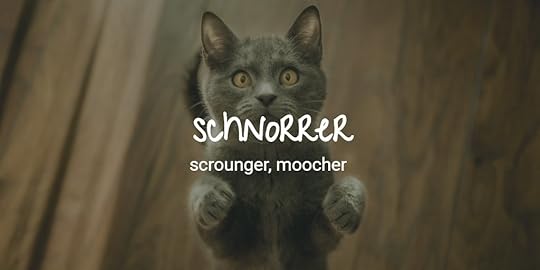
Now this is one that may not be well known in English. A “Schnorrer” in German is basically a scrounger, moocher or freeloader, with “schnorren” being the verb.
The only explanation that I’ve found for this word is that in medieval times (when Yiddish originated) wandering street musicians often used a ratchet which is known as “die Schnarre” in German, and since “a” becomes “o” in Yiddish, we get the “Schnorrer”, i.e. a person who makes noise and begs.
Pronunciation:
Example: “Hey, kann ich eine Zigarrette schnorren?”
die Chuzpe (noun, f.)

This is probably one of the most famous Yiddish words, describing a specific kind of audacity, for better or for worse. It’s based on the Hebrew word for insolence or impudence – “chutspah” (חֻצְפָּה). While the original Yiddish word has a mostly negative connotation, in German and English it’s often used more broadly to describe a general attitude of courage or ardor.
Regarding the Hebrew root “chutspah” I’ve also heard that it’s a compound of “chuts” (out, outwards) and “peh” (mouth), which paints a picture reminiscent of a “Großmaul” in German or “loudmouth” in English.
Pronunciation:
Example: “Ich habe dem Bettler einen Euro gegeben. Und dann hatte er die Chuzpe, mich zu fragen, ob ich nicht Dollar hätte!”
der Ganove (noun, m.)

“I’d sooner be called a successful crook than a destitute monarch.” ― Charlie Chaplin
A Ganove in German is a crook, criminal, hoodlum, etc. It’s based on the Hebrew word for thief: “gannav” (גנב).
Pronunciation:
Example: “Die Ganoven haben drei Millionen Euro gestohlen!”
die Maloche (noun, f.) malochen (verb)

When, as a kid, I first heard this word being used by workers in North-Rhine-Westfalia, it always struck me as odd. Today I know why. It’s actually an ancient Hebrew word for “drudgery” or hard work: “Melacha” (מְלָאכָה) that made it into German via Yiddish. Note, how the “a” at the end is again turning into an “o”.
I’ve never heard this one being used in English so far.
Pronunciation:
Example: “Kommst du mit ins Kino?” – “Ich kann nicht. Ich muss malochen.”
“Tacheles reden”

Do you speak “Tacheles”? When Germans ask to “Tacheles reden” they mean plan talking, or as the Americans say: “talking turkey”.
It’s based on the Hebrew word “tachlit” (תַכְלִית) which means as much as purpose or aim. As far as I know, it’s not being used in standard English.
Pronunciation:
Example: “Ich verstehe nicht, was mein Kollege will. Ich muss mal Tacheles mit ihm reden.”
zocken (verb)

This is a word that’s very widely used in German, and it refers to gambling or recently: (video) gaming.
While it has some negative connotations, “abzocken” – rip off, is even stronger.
It’s based on the Jiddish word “zchocken” which is related to the Hebrew word for “game” – mischak (מִשְׂחָק) and “zachak” laughing, joking (צָחַק).
Pronunciation:
Example: “Willst du am Wochenende Call of Duty zocken?”
das Kaff (noun, n.)

“I had rather be first in a village than second at Rome.” ― Julius Caesar
The German word “Kaff” refers to a small, unimportant village where nothing of note ever happens. In other words: a one-horse town, backwater or hicksville. There is some dispute whether this word actually came via Yiddish from the Hebrew word for “village” – kfar (כָּפָר) or not perhaps from the Romani “gav” (village).
Pronunciation:
Example: “Ich wohne in einem kleinen Kaff im Nirgendwo. Wir haben kein Kino, keinen Supermarkt und nicht einmal eine Bäckerei.”
These are just some of the Yiddish words in German. Check out this exhaustive list for more.
–
The post 11 Yiddish Words in German And Their Ancient Hebrew Origins appeared first on LearnOutLive.
June 29, 2018
Learn German With Radio Plays: Free Audio Dramas For Listening & Learning

Listening to a gripping story as an audio book can be a great way to immerse yourself in narrative German, pick up on on speech patterns, prosody and pronunciation.
But you know what’s even more immersive? Radio plays! The difference between an audio book and a radio play is that the former is usually narrated by one speaker, whereas the latter is a whole production with multiple actors, sound effects and more. Talk about German movies for your ears!
In the following article I’ve combed through the far reaches of the web to bring you some of the best resources for German audio dramas. Whether you like thrilling mysteries, literary classics, sonic experiments or children’s stories, you’re sure to find something that floats your boat here.
Ready? Get your headphones and push play!
 Hoerspielprojekt.de
Hoerspielprojekt.deThis website offers more than 150 audio plays produced by hobbyists and semi-professionals for download. You can choose from the categories of Mystery, Fantasy, Science Fiction and more. Their webradio broadcasts German radio plays 24/7 so you can dive right in.
 website: hoerspielprojekt.de
website: hoerspielprojekt.de
 listen now: lautfm-hoerspiel.radio.de
listen now: lautfm-hoerspiel.radio.de
 Soundtales Productions
Soundtales ProductionsSoundtales Productions is a small label which offers free German radio plays. They produce these dramas themselves, sometimes they work virtually with voice-over talent via the Internet, sending back and forth their recordings.
Soundtales Productions is a vibrant community of actors and producers from all over Germany that are passionate about audio dramas.
 website: soundtalesproductions.de
website: soundtalesproductions.de
 listen now: lautfm-soundtalesproductions.radio.de
listen now: lautfm-soundtalesproductions.radio.de
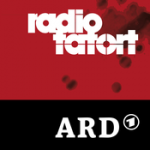 Tatort Radio Dramas
Tatort Radio DramasChances are you’ve heard about the most popular German crime/mystery series “Tatort” which Germans still watch religiously every Sunday evening. But did you know that there are also Tatort radio plays that you can listen to on your commute or while doing the dishes?
Episodes have high production values and are about 50 minutes long each. You can download them on their website or listen to the Tatort Radio Drama webradio.
 website: ard.de/home/radio/ARD_Radio_Tatort/
website: ard.de/home/radio/ARD_Radio_Tatort/
 listen now: radiotatort.radio.de
listen now: radiotatort.radio.de
 SWR2 Hörspiel
SWR2 HörspielThis professional branch of public broadcaster SWR2 focuses solely on high quality radio dramas. Here you can find historical radio art, contemporary sonic experiments, tense mysteries, literary audio dramas and informative documentaries.
 website: swr.de/swr2/hoerspiel-feature/
website: swr.de/swr2/hoerspiel-feature/
 listen now: swr2hoerspiel.radio.de
listen now: swr2hoerspiel.radio.de
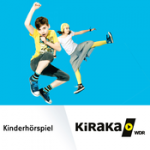 KiRaKa – Radio Plays for Kids
KiRaKa – Radio Plays for KidsKiRaKa is public broadcaster WDR’s children’s channel which broadcasts stories, music and news around the clock. Each Saturday, Sunday and on holidays KiRaKa also broadcasts radio plays for children, both in-house productions and literary adaptions.
But thanks to the on-demand nature of the internet, you don’t have to wait for them to air. Simply go to the WDR website or listen to their webradio.
 website: wdr.de/mediathek/
website: wdr.de/mediathek/
 listen now: kirakakinderhoerspiele.radio.de
listen now: kirakakinderhoerspiele.radio.de
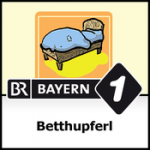 Betthupferl: Bedtime Stories For Young & Old
Betthupferl: Bedtime Stories For Young & Old“Betthupferl” are actually little sweets consumed shortly before going to bed. But for more than 60 years, Bavarian broadcaster BR’s “Betthupferl” series has become synonymous with entertaining bedtime stories for children, parents and anyone who enjoys a good tale while drifting into sweet dreams.
 website: br.de/kinder/hoeren/betthupferl
website: br.de/kinder/hoeren/betthupferl
 listen now: bayern1betthupferl.radio.de
listen now: bayern1betthupferl.radio.de
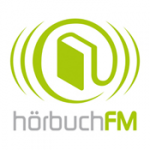 hörbuchFM Web Radio
hörbuchFM Web RadiohörbuchFM is a webradio that broadcasts German radio plays around the clock, from literary classics to audio dramas for children, popular mystery series and much more.
 website: hoerbuchfm.de
website: hoerbuchfm.de
 listen now: hoerbuchfm.radio.de
listen now: hoerbuchfm.radio.de
 WDR Hörspiel-Speicher
WDR Hörspiel-SpeicherOn the WDR Hörspiel-Speicher (“radio play attic) you can easily subscribe to and listen to all the radio plays produced by public broadcaster WDR and its sub-stations.
 website: wdrhoerspielspeicher.radio.de
website: wdrhoerspielspeicher.radio.de
 listen now: wdr.de/mediathek/audio/hoerspiel-speicher/
listen now: wdr.de/mediathek/audio/hoerspiel-speicher/
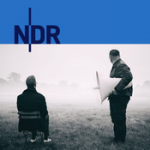
NDR Hörspiel Box
On North German broadcaster NDR’s “Hörspiel Box” you can listen to good stories, sonic art, mysteries and acoustical innovations. They offer classics, contemporary pieces from literature and theater and much more.
 website: ndr.de/kultur/radiokunst/
website: ndr.de/kultur/radiokunst/
 listen now: ndrdramabox.radio.de
listen now: ndrdramabox.radio.de
–
The post Learn German With Radio Plays: Free Audio Dramas For Listening & Learning appeared first on LearnOutLive.
June 25, 2018
New: Café in Berlin German Workbook by Jeff Richards (Free PDF)

Café in Berlin is the book that started the Dino lernt Deutsch series, and it remains one of my most popular German story books to date. It has been an Amazon bestseller for many consecutive months, topping the charts in multiple categories, from German Language Instruction to General German Fiction and German Travel.
I’ve heard from teachers and professors who use it in high schools and universities, you can find multiple people who recorded themselves reading parts of the book on YouTube, and recently I was even contacted about turning it into a movie or TV-series!
And while you’re wondering which actor would best fit the role of our peculiar protagonist (Michael Angarano? A CGI’d young De Niro? Frank Dillane?), I’ve got some other interesting news:
Café in Berlin Workbook – Free PDF
Jeff Richards from the Sioux Falls German Group has been working on an amazing workbook for Café in Berlin. It was originally intended for use in his local German classes, but when I asked him if he’d be willing to share it with you guys, he generously agreed.
Jeff has an extensive background in language teaching and publishing, so this volume is quite a treat, containing more than 60 pages of useful exercises, activities, crossword puzzles, writing exercises, conversation prompts and much more. Also, over the past week Dr. Kristin Kuchenbecker, Jeff and I went over each activity together to improve, clarify, correct and make sure that everything is in top shape.
And you can download the workbook below, for free! It comes in three PDF files:
Cover Pages
Intro pp. i-vii
Workbook pp. 1-60
APPLICATIONS
Jeff even sent a few photos including instructions on how to read/print this excellent workbook:
These files may successfully be viewed on the screens of portable devices and/or computers.
If hard copies are desired, the pages may be run off on attached printers. While they may be printed as single-sided copies, it is preferable to duplicate them in 2-sided format. The documents were prepared in “Facing Pages” layout with the inside margins being slightly larger to accommodate paper hole punching or binding.
–
The post New: Café in Berlin German Workbook by Jeff Richards (Free PDF) appeared first on LearnOutLive.
June 20, 2018
Global German: Sioux Falls, South Dakota

Background vector created by Alvaro_cabrera – Freepik.com
One of the fun aspects of being an indie-publisher is seeing how a book travels around the world, not just in terms of regional clicks and sales, but hearing from actual people.
In the last couple of years I’ve dedicated myself to publishing entertaining and time-effective German learning books, and before long I started receiving emails from German learners and learning groups from all over the world that were using my books: America, Italy, Australia, and even as far as Iran and Kazakhstan!
I’ve always been fascinated by the many reasons why people are learning this language (career, ancestry, hobby, etc.), what their biggest struggles are and which tools and tactics they find most helpful. And recently I thought: why not share these experiences here on the LearnOutLive blog, to bring this global community of German learners just a little bit closer together.
Today I’d like to start off by featuring a German learning group from Sioux Falls, South Dakota. Big thanks to Jeff Richards for helping me put this together and interviewing his co-students.
If you’d also like to tell us about your German learning experiences, please see at the end of this article for more information. Looking forward to hear from you!
But now, over to Jeff:
Warum lernen wir Deutsch?

L to R: (front) Ron (Rudi) Griebel, Dane Steffen; (back) Ginny (Greta) Beck, Jeff Richards (Dieter Schmidt), Dr. Kristin Kuchenbecker, Gary (Gerhardt) Kessler, Rich Siegmann
Weil Deutsch toll ist! Ja wohl! As adult learners, we started our “language adventure” in a Beginning German Community Ed class in the fall of 2016.
Dr. Kristin Kuchenbecker quickly led us through basic expressions, the German alphabet, hobbies, leisure activities, weather expressions, times and dates, foods, giving directions, etc. We also watched videos, played games, practiced with partners, and even sang!
We had such a good time that we continued with Intermediate German in the spring of 2017 where we reviewed and expanded our German language skills. When no more Community Ed classes were available, we continued to meet privately with Dr. Kuchenbecker in the conference room of co-student Ron (Rudi) Griebel’s upscale workplace, Architecture Inc. in Sioux Falls, SD.

This is our “classy classroom” where Deutsch becomes the official language for one night a week!
When Frau Kuchenbecker returned to Germany in December, 2017, we were lucky enough to engage Stefanie Shkinder, also a native of Germany, as our instructor. Since then, the fun has continued with classes moving outside the conference room and occasionally being held in coffee shops and pubs!
Was machen wir im Deutschkurs? Nun, wir sprechen, spielen, lesen, sehen Videos und haben viel Spaß! Und wir lernen gleichzeitig viel Deutsch! Apropos, wir mögen Café in Berlin von André Klein. Ja, es ist ein sehr interessantes Buch mit Dino, seinen Freunden und ihren amüsanten Abenteuern!
Who’s Learning German in Sioux Falls?
 Name: Gary (Gerhardt) Kessler
Name: Gary (Gerhardt) Kessler
Job/Profession: Senior Systems Analyst (retired)
Previous Language Background: High school Latin
Reason(s) for Learning German: Ancestral language
Greatest Challenges: Continuity, not being able to speak Deutsch daily
Helpful Tools/Resources: German class, German group of friends/classmates, books
Favorite German Expression: ein Prosit-ein Prosit (Cheers!), Guten Tag! (Good day!)

 Name: Ginny (Greta) Beck
Name: Ginny (Greta) Beck
Job/Profession: Utility superintendent City of Crooks, SD, Tri-Valley School bus driver
Previous Language Background: two years of high school French and one year of college French
Reason(s) for Learning German: I am 88% German. It was the spoken language of my grandparents.
Greatest Challenges: Since I work two jobs, finding the time to study!
Helpful Tools/Resources: Duolingo, Google translate, other Internet sources
Favorite German Expression: Ausgezeichnet! (Excellent! Great!)

 Name: Richard (Rich) Siegmann
Name: Richard (Rich) Siegmann
Job/Profession: Hausmann, arbeite auf dem Bauernhof, diesel Mechaniker, Märklin Modeleisenbahn, Hausrenovierung
Previous Language Background: kein
Reason(s) for Learning German: Wir haben zwei Jahre in Darmstadt gewohnt (1999 bis 2001). Letztes Jahr hatten wir einen deutschen Austauschschüler aus Potsdam.
Greatest Challenges: Vokabel lernen
Helpful Tools/Resources: Heuber learning wheels, Wie Geht’s Buch, Kinderbücher und natürlich Dino lernt Deutsch
Favorite German Expressions: Scheibenkleister, Ich möchte ein Bier bitte, Noch ein Hefeweizen bitte, können Sie mir helfen? Ich brauche ein Bier. Das Bier schmeckt gut.

 Name: Dr. Kristin Kuchenbecker
Name: Dr. Kristin Kuchenbecker
Job/Profession: Teacher (German as a second language and English as a second language)
Previous Language Background: German, English, some Russian and Spanish
Reason(s) for Learning German: I come from Germany and 2 foreign languages are required for a high school diploma. Have fallen in love with the study of language and culture ever since.
Greatest Challenges: staying up-to-date with new teaching methods and recruiting students to study a foreign language
Helpful Tools/Resources: the internet, apps and print materials
Favorite German Expression: Heidewitzka! (Es ist ein shout-out wie „Ooffta!“)

 Name: Jeff Richards (Dieter Schmidt)
Name: Jeff Richards (Dieter Schmidt)
Job/Profession: French teacher (retired); free-lance reviewer (all components), consultant (Teacher’s Editions), and author (Video Books & Semester Tests) for DISCOVERING FRENCH program
Previous Language Background: French, Spanish, e un poco italiano
Reason(s) for Learning German: I like the sound of German and would like to swing over into Deutschland the next time I visit France.
Greatest Challenges: Everything German!
Helpful Tools/Resources: textbooks, YouTube instructional videos, Duolingo, and readers, including Café In Berlin & Dino lernt Deutsch!
Favorite German Expressions: Gottseidank! (Thank God!), Was geht ab? (What’s up?), Mist! (Shucky darn!)

 Name: Ron Griebel (aka Rudi as per Dieter Schmidt)
Name: Ron Griebel (aka Rudi as per Dieter Schmidt)
Job/Profession: Senior Project Coordinator, Architectural CADD Tech
Previous Language Background: none
Reason(s) for Learning German: Ancestors’ language
Greatest Challenges: Grammar and not able to speak it every day.
Helpful Tools/Resources: German class, friends, Babbel and books
Favorite German Expressions: Was ist das? (What is that?) und Das ist nicht gut! (That’s not good!)

 Name: Stefanie Shkinder, geb. Dill
Name: Stefanie Shkinder, geb. Dill
Job/Profession: gelernte Krankenschwester zur Zeit aber Mutter und Hausfrau
Previous Language Background: Ich bin in Deutschland geboren und meine Muttersprache ist deutsch. Meine Eltern (aus Russland + Ukraine) brachten mir als 2. Sprache Russisch bei, die ich bis jetzt flüssig spreche. Seit der 3. Klasse lernte ich die englische Sprache, die ich bis heute noch lerne und spreche.
Reason(s) for Learning German: Ich unterrichte nun die Gruppe in Deutsch und lerne selbst dabei beide Sprachen: Die deutsche Grammatik sowie die englische.
Greatest Challenges: Meine Herausforderung ist, dass ich noch nicht genug Vokabeln im Englischen kenne und auch leider noch zu wenig Englisch spreche.
Helpful Tools/Resources: schaue mir Filme an, lese Bücher und der Kurs hilft mir
Favorite German Expressions: Echt?! (Really?!), Komm schon! (Come on!), Am Ende wird alles gut und wenn es noch nicht gut ist, dann ist es noch nicht das Ende. (In the end everything will be fine and if it’s still not fine, it’s not the end yet.)

 Name: Paul Shkinder
Name: Paul Shkinder
Job/Profession: Drafter
Previous Language Background: My first language is Ukrainian. I learned English when I moved to the US in 2005.
Reason(s) for Learning German: To communicate with my wife, daughter, and her family in Germany.
Greatest Challenges: self-motivation
Helpful Tools/Resources: my wife and our German group
Favorite German Expression: Echt?! (Really?!)

 Name: Dawn Bagherpour
Name: Dawn Bagherpour
Job/Profession: Retired ESL and elementary teacher, missionary
Previous Language Background: Turkish, Farsi
Reason(s) for Learning German: Heritage and love for Germany since I was 13, work in Germany.
Greatest Challenges: FEAR of speaking mistakes and failure. My teacher reminded keeping silent and not speaking you will surely fail. Just go out and speak!
Helpful Tools/Resources: YouTube German lessons, Duolingo app, German movies,
YouTube sitcoms: Loriot, Türkisch für Anfänger, Geschichten aus dem Leben, and Deutche Welle langsam gesprochen Nachrichten
Favorite German Expression: My grandma always said “Arbeit macht das Leben süß.” (“Work makes life sweet.”) That is the one that was ingrained in my brain.

 Name: Safi Bagherpour
Name: Safi Bagherpour
Job/Profession: Microbiologist, teacher, missionary
Previous Language Background: Spanish, Farsi, Turkish
Reason(s) for Learning German: Job in Germany
Greatest Challenges: Learning at my age 60.
Helpful Tools/Resources: Duolingo, YouTube Deutsch lessons, German movies & TV
Favorite German Expression: none yet

Are you learning German, too, and would like to be featured on our blog? Write an email to info@learnoutlive.com including a photo, a bit of background about yourself, why you’re learning German, what parts your struggling with, and which tools/resources you find most helpful.
–
.wp-image-18852, .wp-image-18850 {padding:18px;}
The post Global German: Sioux Falls, South Dakota appeared first on LearnOutLive.
June 15, 2018
How To Learn German in Germany When Everyone’s Speaking English To You

So you’ve downloaded a couple of German apps, read some books, picked up a few phrases, and then you finally get on that flight to Berlin or Munich, eager to put all of your efforts to use.
You’re going to Germany after all. What better place to learn German?
Well, …
It turns out that Germans really love speaking English. In fact, they love it so much they’ll use any opportunity they can to practice or simply show off.
I’ve even heard stories of two Germans meeting abroad and actually preferring English …
Which is great for them and their English proficiency, but not so great if you’re trying to learn German!
That’s why in this post, I’ve listed a few strategies you can use to do the seemingly impossible: get Germans to talk German to you.
But first, a comic by Malachi Ray Rempen (itchyfeet) which is painfully true:

Talk Deutsch To Me
The easiest thing you can do is to simply ask Germans to speak German to you. They may think they’re making your life easier by switching to English, but in the end it’s no help at all. So if they really want to be helpful, tell them how!
Instead of getting frustrated and wasting valuable practice opportunities, just ask. Here’s how:
“Entschuldigung. Könnten Sie bitte Deutsch mit mir sprechen?” – “Excuse me, could you please talk German to me?” (formal)
“Entschuldigung. Könntest du bitte Deutsch mit mir sprechen?” (informal)
You could add something like:
“Ich lerne Deutsch und brauche mehr Übung.” – “I’m learning German and I need more practice.” or
“Ich bin Deutschlerner und will mein gesprochenes Deutsch verbessern.” – “I’m a German learner and want to improve my spoken German.”
They may still prefer to answer in English, either because they’re too impatient to wait for you to process what they’ve said, because they don’t want to slow down, or repeat themselves, or because — Germans being Germans — they want to be 100% sure you understood everything precisely as they said it.
But even if they won’t heed your request, you can still continue speaking in German to them! The main point here is not to give up!
Put differently, since you can’t aways rely on people to speak German to you, you’re going to have to be more proactive in your own speaking efforts.
Dropping the “Super” And Going Rural

Farmers markets can be a great way to do some healthy shopping and improve your German conversation skills.
Supermarkets are everywhere in Germany and the food prices are among the lowest in the Western world. But after putting all your goods onto the conveyor belt and hastily stuffing everything into your bags as the cashier is hurling eggs, milk and drinks at lightning speed, there’s not much speaking practice to be had, except for a mumbled “Hallo” or “Schönen Tag noch!” (“Have a nice day!”). If you use self-checkout terminals, it’s even worse, since it requires virtually no human interaction.
So next time you’re low on cheese, bread and vegetables, why not simply visit your local market instead? Even the smallest towns in Germany have a “Wochenmarkt” (weekly market) and in big cities like Berlin you can go to a different one every day.
The prices may be slightly higher than in the supermarket, but consider going to your local farmer’s market an investment in your German practice.
Especially with dairy and bread being sold from behind booths you’re going to have to ask the merchant: “Ich hätte gern zweihundert Gramm Cheddar, bitte.” – “I’d like to have 200 grams of cheddar, please.”
Products may not always have a price tag, so again, you’re going to have to ask: “Wie viel kosten die Tomaten, bitte?” – “How much are the tomatoes, please?”
If you have questions about something, you can’t just read the package. Again, you’re going to have to ask: “Ist das Schweinefleisch?” – “Is that pork?” or: “Entschuldigung, ich habe eine Allergie. Sind Erdnüsse in diesem Brot?” – “Excuse me, I’ve got an allergy. Are there peanuts in this bread?”
Some of these encounters may even turn into little conversations. Yes, Germans are not big on small-talk, but on a market there’s generally more opportunity for conversation than under the harsh neon glow of a giant supermarket.
Verbalize All The Things! Read Signs And Ads Everywhere
This is a strategy which is less focused on interaction but it’ll still help you familiarize yourself with German pronunciation. Plus, you can do it anywhere!
When you’re strolling through the city, or sitting in a bus or train, there are German signs and ads everywhere. Try to read them and verbalize them in your head. Even if you don’t always understand each and every word: wow would you pronounce them? You can also take notes and check on Forvo or with a native speaker to see if you got the pronunciation right.
Or even better: ask your German teacher or classmates! Wait, you haven’t taken German classes yet?
Free German Courses & Classes

German classes work. And they don’t even have to cost anything.
This may sound obvious, but taking German classes will be one of the most effective ways to get some speaking and listening practice.
In Germany, education is considered a fundamental basic human right. That’s why getting a university degree is basically free. And while there are many different German courses and classes offered by private schools and institutions which can be very costly, you can also find free (or subsidized) German courses at your local Volkshochschule (adult education center).
Here are selected offers from various cities. Click through the courses for more details:
Berlin (German classes sorted by level and topic)
Hamburg (integration courses and German classes)
Munich (language, integration and naturalization)
Cologne (general language courses category)
Frankfurt (link to search results. Click “Sprachen” to filter language courses
Google “Volkshochschule [City] Deutsch” for other cities.
While none of these things will force Germans to speak Germans to you in daily life, you’ll still make the most of being in Germany while trying to learn the language.
Just don’t get too frustrated! Here’s another comic by itchyfeet that perfectly describes the situation:

–
The post How To Learn German in Germany When Everyone’s Speaking English To You appeared first on LearnOutLive.
June 8, 2018
How To Blast Off With Easy German Reading Practice

There are many moving parts in the German language: grammar, vocabulary, pronunciation, etc. These are all things that native speakers tend to be unaware of. We don’t “calculate” declensions, rummage through our mental dictionaries or twist our tongue into unseemly shapes. We just speak.
If only it were that easy for learners …
When it comes to the question on how to become fluent most quickly in German, there are many approaches. Some of my colleagues are great believers in the “get out there and converse fast as possible” approach. Others will put greater emphasis on first acquiring a solid bedrock of grammar, while yet others will prioritize stacking your mental dictionary with as many words as possible.
I don’t think any of these approaches are wrong. In the end, what works best is what works for you. But in the last 15 years of teaching students from all over the world from ages 7-65 I’ve found that one of the most effective ways to level up your skills is by reading stories in German.
I admit, it doesn’t sound as flashy as the latest app with newfangled AI neural-net doodads, but it just works.
4 Reasons Why Reading German Stories Will Skyrocket Your Skills
Before we get into the kinds of text you can read in German, I’d like to talk a bit about why this approach is so effective. Feel free to skip to the end and jump right into reading your first German stories.
1. Learn More Words Faster And Remember Them Longer
Let’s do a little experiment. I’ll teach you a new German word right now. Ready? Ok, here we go: “Das Raumschiff” (space ship). Maybe you’ve heard it before. But if it’s new to you, try to memorize it now. I’ll wait.
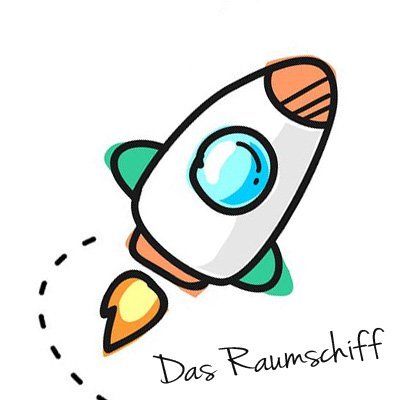 Now, without looking at the word again, how do you say “space ship” in German? “Das Raumschiff”. That’s right. But are you still going to remember it 10 minutes from now, 1 hour, 1 day, 1 month?
Now, without looking at the word again, how do you say “space ship” in German? “Das Raumschiff”. That’s right. But are you still going to remember it 10 minutes from now, 1 hour, 1 day, 1 month?
My point is, even if you learn a thousand new words today, if you don’t reinforce them in regular intervals by using flashcards or other methods, the slow rot of forgetfulness will set in and you’ll have to start all over again.
But don’t be discouraged yet! There’s a sweet little workaround.
See, in the above example I simply taught you one isolated word with no context whatsoever. When you learn new words by reading German stories, however, each word is part of a sentence, which is part of a paragraph, which is part of a page, etc.
In other words, there’s a lot more context. And it’s precisely that context which helps you acquire new German words faster by understanding them in relation to other words, because you can guess more easily what they mean. For example, in a sentence like “Das Raumschiff fliegt zum Mars.”, if you know that “fliegt” means flies and Mars is a planet (duh), it’s no miracle to guess that “Raumschiff” means space ship.
In consequence, memorizing these new words will also be easier, firstly, because key words will often appear multiple times while reading a German paragraph or a page, reinforcing memorization. Secondly, because you remember them in context.
For example, perhaps the word “Raumschiff” reminds you of a character in a story, a certain experience she had, or a specific mood. Perhaps you associate it with the (mental) space you were in when you first read it. In short, your brain doesn’t just deal with one single piece of vocabulary, but with a whole set of connected items.

our brains remember new words better in context
2. A Wild Grammar Appeared
Similarly to acquiring new words faster and retaining them longer, context also helps you to make sense of German grammar.
Learning about grammatical phenomena in isolation is a good idea to get a very general overview of how something like case declension operates. But once you actually see it in the wild, as it were, i.e. in context on the page, it gets a lot easier to understand and reproduce.
Sure, you could just learn all the declension and conjugation tables by heart. But how much of it are you ever going to use?

Declension tables. Who doesn’t love them?
3. The Power of Stories, And Why Your Brain Loves Them
One of my favorite aspects of teaching German by reading stories is the amazing effects good storytelling has on our brain.
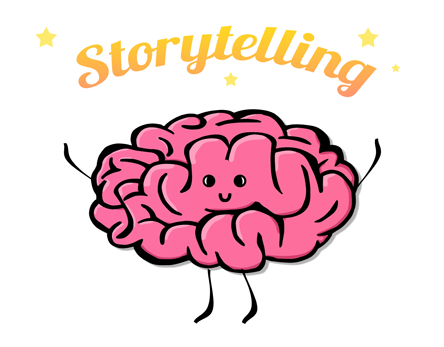
According to some neurological research it does the following:
boost motivation
increase attention & focus
heighten sense of empathy
By reading a good story in German, you’ll naturally want to know what happens next. This can be a good motivator to pull you through what’s after all a taxing task for our brains: reading in a foreign language!
Researchers have found that the brain often show higher cortisol and oxytocin levels after reading a story, which are linked to heightened attention and empathy and care.
For language learners this increased sense of empathy with characters in the story is another hook we can use, because once we start to care about someone, we’re willing to make more efforts, in this case, continuing to read and learn.
4. Safe Pronunciation Practice
Last but not least, reading German texts can be a safe way to practice pronunciation while reading out loud. If possible, get a native speaker to listen to you and provide feedback. You could also record yourself and upload it to a language learning community.
3 Ways To Start Reading in German
Now that I’ve talked at length about why reading in German is so effective, let’s look at the kind of materials you can use. Many of the effects described above can’t be derived from just any kind of text. You’ll need to select them carefully. Also, check out these tips and strategies on how to learn German by reading.
1. German Children’s Books
Reading German children’s books is the first thing many learners think of, and that’s fine, if these stories can keep your interest and attention long enough. For most adult learners I’d actually recommend using specifically designed stories for learners.
Nevertheless, there are tons of free German children’s books out there, if you know where to look:
International Children’s Digital Library
Children’s Books Forever
Umweltbundesamt
Fachagentur Nachwachsende Rohstoffe
Bundesamt für Naturschutz
LearnOutLive Books
2. Simple German News & More
If children’s stories aren’t your thing (I personally don’t find them useful as they often fail to engage me) you can start reading the news and other simple German texts.
You’ll be able to reap all the benefits of acquisition, reinforcement and retention via context, but keep in mind that you won’t necessarily get the same positive brain effects as with reading stories.
Here are some good places to read the news in simplified German:
mdr.de
ndr.de
sr.de
augsburger-allgemeine.de
nachrichten-leicht.de
3. Learning German With Stories
Last but not least, here’s my favorite method of learning German. Please note that in order to maximize your benefits, you’ll have to find stories that engage you on a personal level.
While I can’t tell you what works for you I can offer you various sources to choose from:
German Short Stories For Beginners. In this article I’ve collected a number of literary short stories from post-war Germany that manage to convey very complex situations in a relatively simple language.
Easy German Short Stories. If literary short stories aren’t your cup of tea, I’ve collected a couple of fairy-tales and other stories for you in this post.
Learn German With Stories. Since I’ve found many of the existing materials lacking, I’ve written a number of different stories for German learners across different Genres (travel, fantasy, mystery) and difficulty levels (beginners, intermediates, advanced) myself.
–
h4 {font-family: Arial,Helvetica,sans-serif;font-weight: 400;margin:12px 0px;color: #333;text-transform: initial;}
The post How To Blast Off With Easy German Reading Practice appeared first on LearnOutLive.
June 6, 2018
25+ Easy German Short Stories To Boost Your Reading Skills

Learning German with stories is one of the most effective ways to increase your vocabulary and rapidly make sense of grammar in action. Don’t believe me? There’s actually some interesting brain research on how languages affect our cerebral pathways.
But finding easy German short stories to practice your reading skills can be daunting, especially when combing through websites that are all in German. What are good sources? Do they actually use good German? Are they error-free? Fear not! I’ve done the work for you.
In a previous post about simple German short stories for beginners I’ve showcased a handful of literary short stories, mostly from post-war times which are interesting enough but not too difficult for beginners. However, even these required a certain level of German to make sense of.
That’s why, in today’s post, I’d like to share a few stories with you that are even simpler and more accessible, so that even if you’ve just started out learning German, you can begin reading right away.
12 Fairytales in Easy German Language

Who doesn’t remember the classic fairy-tales by the Grimm brothers like Hänsel und Gretel, Rotkäppchen (Little Red Riding Hood) or Rapunzel? But if you’ve ever tried reading the original in German, you’ll know that most versions of these stories (especially those found on free websites) are told in a very archaic and baroque German, which is not just hard but almost impossible to fathom for novice learners.
Luckily the simplified German portal of national broadcaster NDR has a number of German fairy-tales rewritten in Einfache Sprache (simple language), so even absolute beginners can enjoy these classic tales. Bonus: They all come with slow professional audio narration, so you don’t have to puzzle over pronunciation.
Start reading (or listening) at ndr.de or select one of the following fairy-tales:
Rotkäppchen (Little Red Riding Hood)
Schneewittchen und die sieben Zwerge
Rapunzel
Dornröschen
Die Bremer Stadtmusikanten
Der Wolf und die sieben Geißlein
Der Hase und der Igel
Rumpelstilzchen
Hänsel und Gretel
Frau Holle
Die 3 Federn
Des Teufels rußiger Bruder
Nick, His Friends And A Photographer, by René Goscinny (And 2 Other Stories)

This story is told after a chapter from “Le petit Nicolas” by the popular French author Goscinny, world-renown for the Asterix stories. The authors of deutschalsfremdsprache.ch went to great lengths to retell the story using very simple but grammatically perfect German. This story even comes with a few basic text comprehension questions.
 Read PDF via: deutschalsfremdsprache.ch
Read PDF via: deutschalsfremdsprache.ch
If you like this story, there are also two other chapters:
Nick und seine Freunde spielen Fußball
Der kleine Nick am Strand.
Tom Sawyer And The Garden Fence, by Mark Twain (And 7 Other Stories)

In this retelling of a chapter from Mark Twain’s “The Adventures of Tom Sawyer”, the deutschalsfremdsprache.ch did a similar feat like with the above French story: keeping the original narrative and restructuring grammar and vocabulary to make for easy German reading. Just like the above story, this PDF comes with some exercises.
 Read PDF via: deutschalsfremdsprache.ch
Read PDF via: deutschalsfremdsprache.ch
Other chapters in this series include:
Tom Sawyer kommt zu spät
Tom Sawyer auf dem Friedhof
Tom Sawyer auf der Insel
Tom Sawyer und die Gerichtsverhandlung
Tom Sawyer auf Schatzsuche
Tom Sawyer in der Höhle
Tom Sawyer findet einen Schatz
All of these stories come with some exercises, without an answer key though. If you’d like to get the correct answers to all the exercises the owners of this website sell a CD containing all their worksheets plus answers. It’s not that cheap but a great way to support the authors of these excellent resources.
The Greedy Dog, by Erasmus Alberus (And Tons Of Other Stories)

Karin Hohlweg, a teacher of the deaf in Halberstadt, has created a content-rich website with tons of easy German short stories in a wide range of categories. You’ll find stories about animals, seasons, quizzes, fables and classic ballads
While these texts are originally intended to help deaf children boost their vocabulary and reading skills (see my post on Leichte Sprache), they are actually really helpful for German learners as well, since the stories are very short and to the point.
The presentation of the website may look a bit outdated a first, but don’t be discouraged. This is a treasure trove of easy German short stories, all available in convenvient PDF format, many of them even with illustrations.
Here’s an example: a fable entitled “The Greedy Dog”, originally by Erasmus Alberus, retold in easy German:
 Read PDF via: sos-halberstadt.bildung-lsa.de
Read PDF via: sos-halberstadt.bildung-lsa.de
“Beard Off”

Bremen Lebenshilfe, a registered association that is dedicated to helping the mentally handicapped, has a little website in simplified German with easy German short stories.
The stories cost a few euros each, but they also provide a free sample which showcases the barrier-free layout and fitting illustrations. While originally designed for people with handicap, I think these short can be an excellent way for beginner German learners to start reading.
 Read PDF via: leichte-sprache.de
Read PDF via: leichte-sprache.de
Learn German With Stories: Dino lernt Deutsch
Last but not least, I’d like to point you to my own story series for German learners entitled Dino lernt Deutsch. It’s about a young man from Sicily that tries to find his way in Germany, in each episode exploring one city in Germany, Austria or Switzerland. You can get the whole series on paperback, Kindle, iBooks, or as MOBI/EPUB download directly from our site. There’s also an option to get the first four books in a nice bundle (including a sweet discount). Here’s a free preview:
–
The post 25+ Easy German Short Stories To Boost Your Reading Skills appeared first on LearnOutLive.



